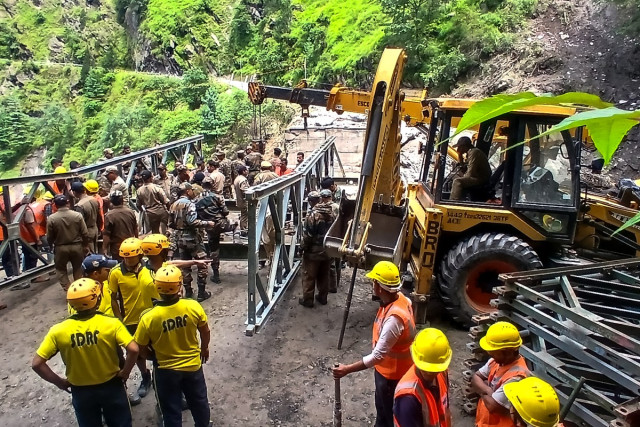Indian authorities report that at least 68 individuals remain missing a week after a devastating surge of icy water swept through a Himalayan town, burying it under mud.
In addition to the four confirmed fatalities, the overall death toll from the August 5 catastrophe now exceeds 70.
Videos posted by survivors revealed a horrifying rush of muddy water destroying multi-storey buildings. On Tuesday, disaster officials announced that they were searching for bodies among the debris in the tourist town of Dharali, located in Uttarakhand state.
Gambhir Singh Chauhan from the National Disaster Response Force mentioned that sniffer dogs had pinpointed multiple locations indicating the presence of bodies, but whenever excavation commenced, water emerged from below.
Chauhan noted that teams were also employing ground-penetrating radar in their challenging search. Over 100 individuals were initially reported missing, but efforts to verify the list have taken days due to destroyed roads and damaged mobile communications.
The local authorities currently identify 68 people as missing, consisting of 44 Indians and 22 Nepalis, including nine soldiers.
While floods and landslides are frequent during the monsoon season from June to September, experts assert that climate change and poor urban planning are exacerbating both their occurrence and intensity.
Climate change specialists have called this disaster a “wake-up call” regarding the impacts of global warming.
Although no official cause for the flood has been determined, scientists believe it was likely caused by heavy rainfall leading to a collapse of debris from a quickly melting glacier.
Himalayan glaciers, which supply essential water to almost two billion people, are melting at an unprecedented rate due to climate change, making communities vulnerable to unpredictable and costly disasters. The thawing of permafrost raises the likelihood of landslides.




















